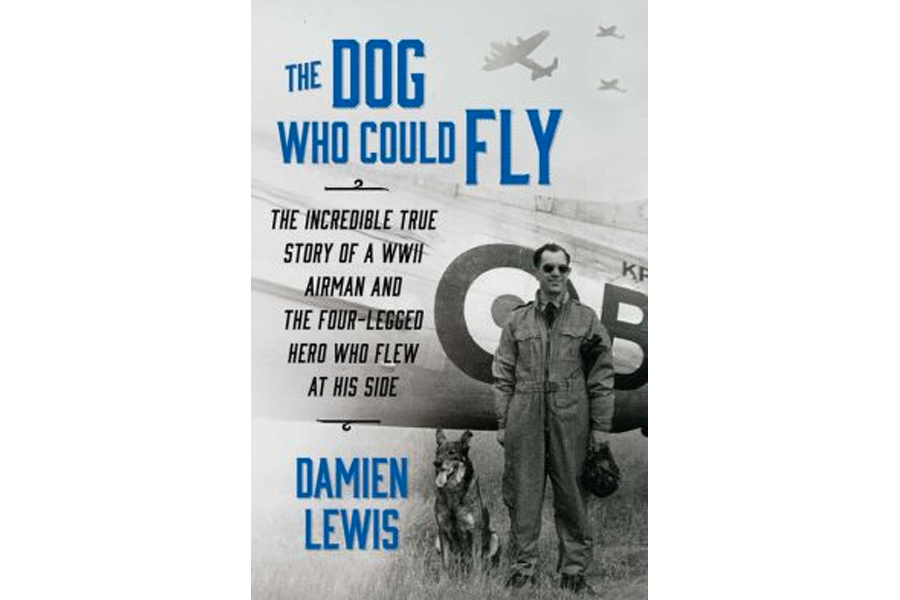'The Dog Who Could Fly' is a superb account of a Nazi-fighting German Shepherd
Loading...
War, a poignant backdrop to any type of story, contrasts brilliantly with love. And so it is for this love story – between a man and his dog.
The two meet under deadly circumstances. Czech airman Robert Bozdech crashes in a grim no-man's land, between German and French forces at the beginning of World War II. It is January 1940 and the German army is shortly to begin its surge across the rest of continental Europe.
In an abandoned farmhouse where Robert and his French pilot take shelter, he finds a starving puppy amid the rubble. Not weaned yet, the emaciated dog is able to suckle warmed-up chocolate from Robert's finger.
Several hours later Robert makes a momentous decision. The humane choice would seem to be to put the tiny dog to sleep rather than leave him to slowly starve. Taking the dog along seems out of the question given the perilous hike Robert and the wounded pilot must take through enemy fire.
But he can't do it – he can't kill the tiny dog. Robert slips the dog under his coat and then, along with the pilot, makes the terrifying and arduous journey to safety.
If your eyes are getting moist, join the club. I found myself tearing up many times while reading The Dog Who Could Fly, this superb account by British journalist Damien Lewis of a German Shepherd who joins his master to fight the Nazis.
So Robert, along with six other Czech airmen, eventually escapes to Britain to serve in the Royal Air Force, along the way facing not only a saga of obstacles and dangers but the added challenge of smuggling along a dog Robert names Antis.
Long before Robert and his mates are welcomed into the RAF, Antis wins Robert's heart. His loyalty, courage, and intelligence, even as a puppy, create a bond of love, one that survives some of the most challenging circumstances.
Before France capitulates, Robert returns to fly with the French Air Force in a last-ditch effort to slow the advance of the Germans, joined by Antis. (Later Antis would fly with Robert in the RAF.)
"It seemed almost the most natural thing ... for Ant to leap onto the wing of the aircraft and climb in beside him ... The perils of the mission didn't seem to worry him ... His ears pricked up a little as the punching percussions of machine-gun fire filled the gun turret, his nose twitched at the thick cordite fumes that drifted all around him, but other than that he didn't ... stir from his laid-back position prone on the metal floor."
But Antis was to prove himself much more than a comforting companion in battle. During the course of the war, the dog saves lives by hearing, and warning his master of, the approach of German bombers long before they could be detected by air defense. And after one horrific attack, he becomes a rescuer, sniffing out survivors in the rubble of a building.
One time, on a bombing mission over Mannheim, Antis is badly wounded by shrapnel. It was toward the end of the flight, before the Czech crew needed to crash-land the plane back in England, that Robert discovers his dog is hurt.
Antis "had lain ... for hours ... suffering intense pain. Yet never once had he cried out or whimpered, or tried to distract Robert from his task – that of defending their aircraft. He had borne his injuries with a fortitude that would challenge the bravest of men...."
The story of Robert and Antis could be told in plain prose and still make a page-turning book. But Lewis recounts their story so vividly it is possible to become sufficiently absorbed as to forget one is even reading.
Lewis's approach emphasizes personalities and interactions, including Robert's romantic entanglements. It's old-fashioned good storytelling, scrupulously crafting colorful and detailed descriptions, without getting sidetracked in R-rated depictions.
This is the third book about Robert and Antis. As recently as 2007, Hamish Ross wrote "Freedom in the Air: A Czech Flyer and his Aircrew Dog." Meanwhile, the excellent "One Man and his Dog" by Anthony Richardson, published in 1960, provides similar details to Lewis's book, but also recounts the harrowing escape of Robert and Antis from Czechoslovakia after Communists take over the government in 1948. Without Antis's protection and guidance – at one point disabling a border guard – it's likely this flight to freedom would have failed.
Antis had saved the day, had survived a another deadly adventure, enabling him, with Robert, to live a long doggy life in England.
David Hugh Smith lives in Brookline, Mass. His family includes Merlin, a rescued dog like Antis, but one whose days are far more peaceful and filled with the pursuit of treats.








